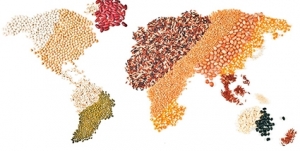RETAIL FPI | Are Major Food Commodities Becoming More Expensive?
By the end of March, food prices increased by 4.4% y/y (that is, compared to March 2016) and by 1.6% m/m (that is, compared to February 2017). On a biweekly basis, the biggest price increases happened for coriander (40.3%), cucumber (30.0%) and eggplant (14.9%). Carrots, onions and tomatoes, on the contrary, became cheaper and cost 22.1%, 24.4% and 15.0% less, respectively.
LOOKING AT A PARTICULAR BUNDLE OF PRODUCTS
According to the Retail FPI, prices of major commodities increased in March this year compared to the same period the previous year. Sugar prices increased the most, rising by almost 30%, whereas rice, buckwheat, and wheat flour prices increased by 23.8%, 16.3% and 7.1%, respectively.
While m/m changes are usually driven by seasonality or holidays, such as Easter, y/y changes are mostly driven by the variations in production and international prices.
Commodities in the diagram are basic foods that are actively traded on international food markets, and, due to their importance for food security in developing countries, the FAO closely follows their prices. FAO’s latest data on their Sugar Price Index shows a huge 55% increase in sugar prices y/y (Feb 2017 compared to Feb 2016). The most recent prices for cereal are also higher, as shown by the Cereals Price Index.
Given that Georgia is a net importer of these commodities, one might expect further price hikes if international trends are continued into the future, unless Georgian supermarkets offer some discounts to consumers due to the Easter holidays.











